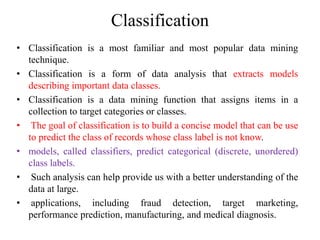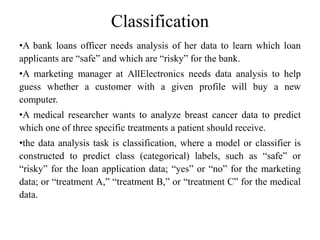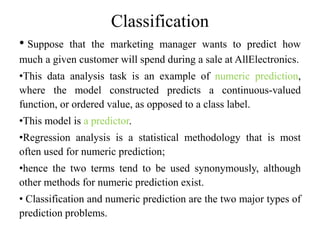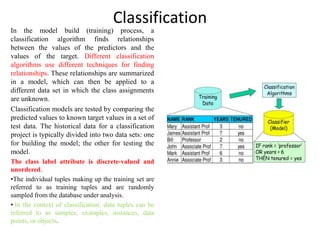Classification is a popular data mining technique that assigns items to target categories or classes. It builds models called classifiers to predict the class of records with unknown class labels. Some common applications of classification include fraud detection, target marketing, and medical diagnosis. Classification involves a learning step where a model is constructed by analyzing a training set with class labels, and a classification step where the model predicts labels for new data. Supervised learning uses labeled data to train machine learning algorithms to produce correct outcomes for new examples.







